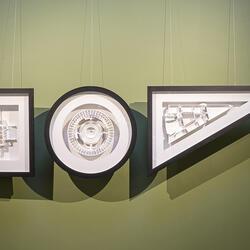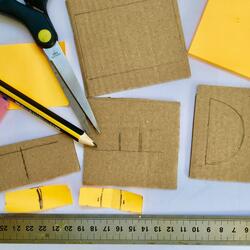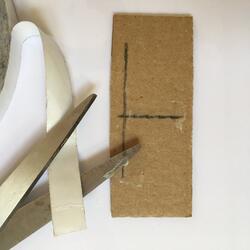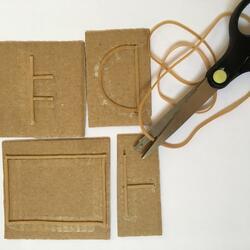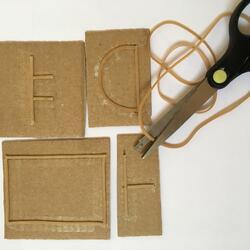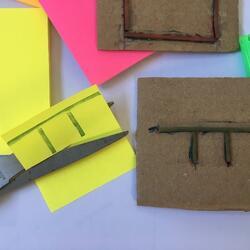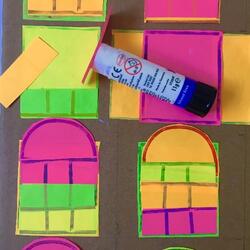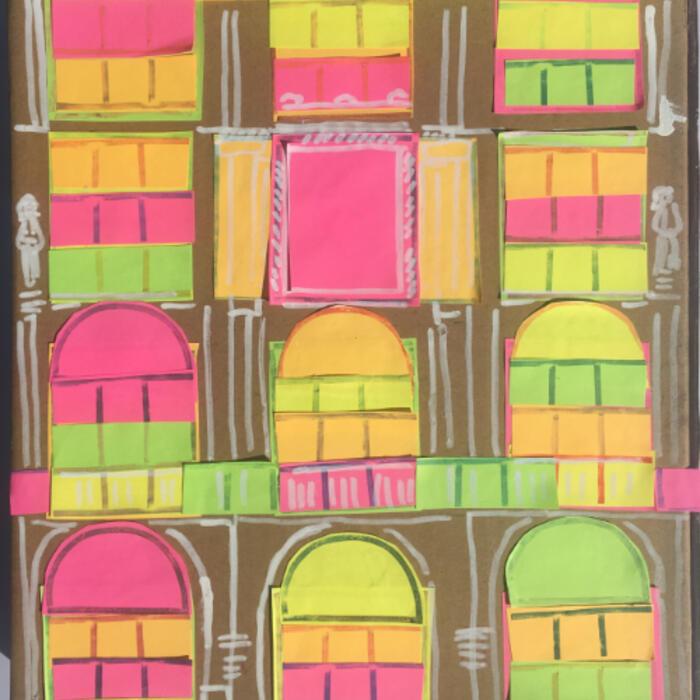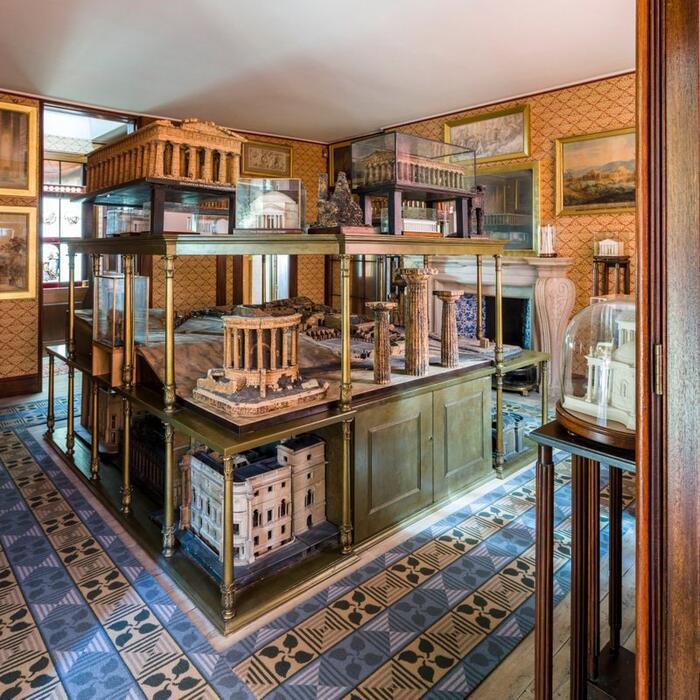Search results
Foyle Space Back to top
Click the images for further information
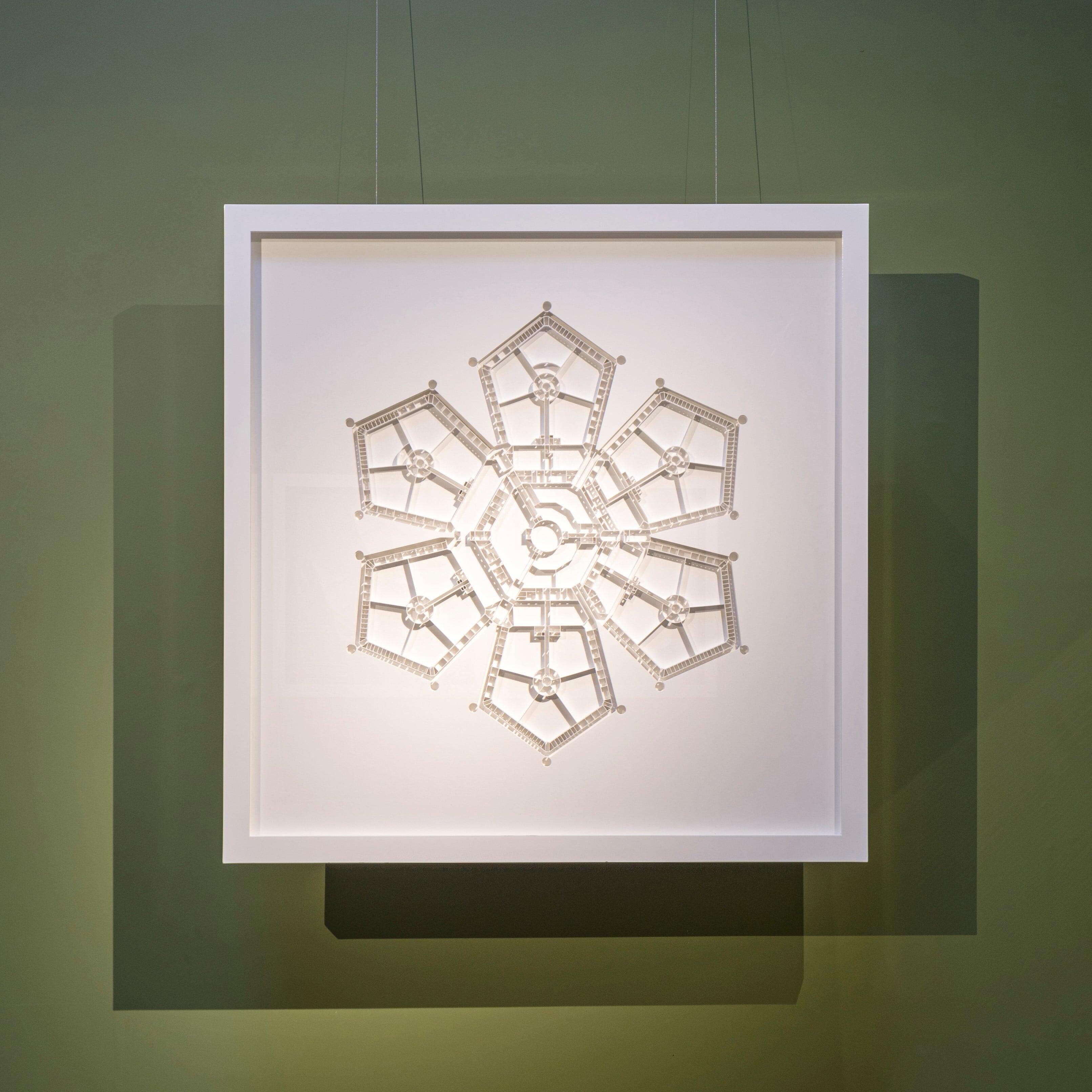
Millbank Penitentiary
Photo by Gareth Gardner
Millbank Penitentiary 1994
Wood, glass, aluminium, paint, lacquer
112 x 112 x 16 cm
Ipswich City Museum & Art Gallery, Ipswich
Millbank Penitentiary was a prison located in Millbank, Westminster, on the site now occupied by Tate Britain. It operated from 1816–1890 and was constructed on the site where Bentham’s proposed panopticon was originally going to be built. Although the panopticon plan was abandoned, the prison that was built demonstrates a centralised plan. However, instead of a guard at the centre, there was a chapel. In this way, the eye of God took the place of the eye of the guard, intending to instill religion into the prisoners and compel them to regulate their behaviour.
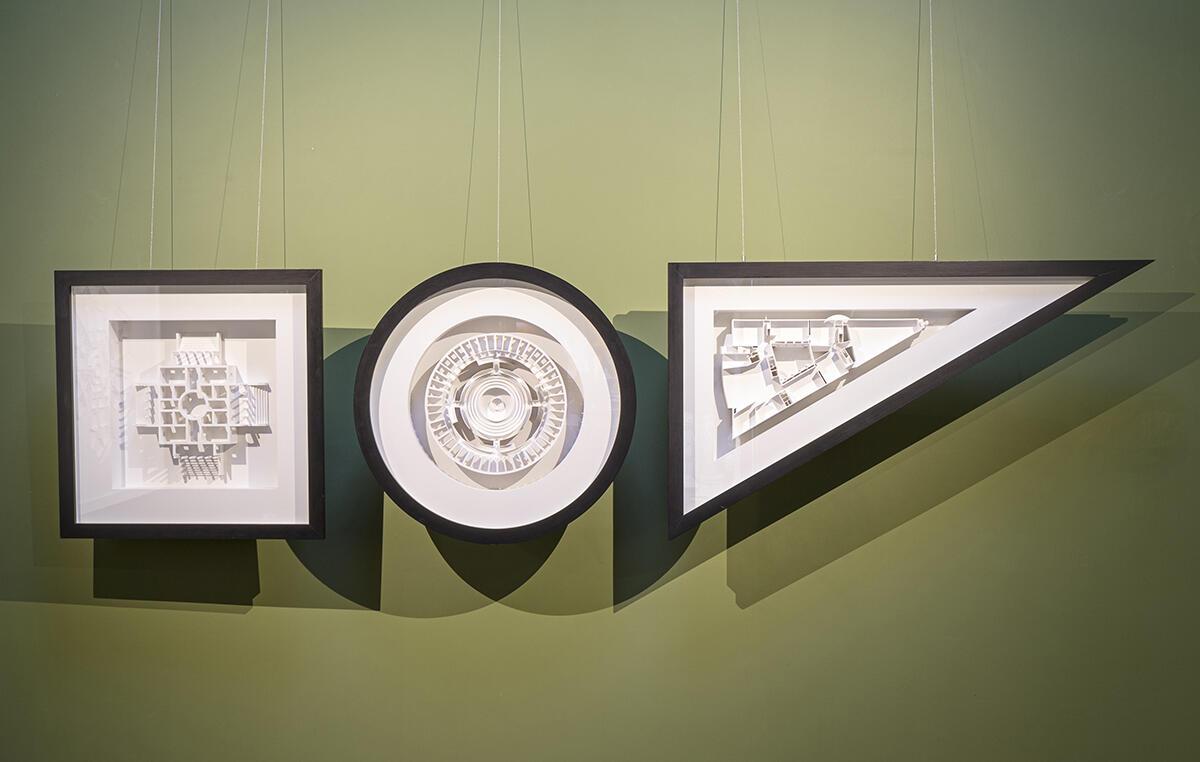
Museums in Motion
Photo by Gareth Gardner
Museums in Motion 1989
Wood, paint, glass, lacquer
77 x 322 x 13 cm (overall)
DJ Lockhart, London
This work is a triptych that depicts three different buildings using the elemental shapes of square, circle, and triangle. The circle forms the centre of the triptych, and inside this work is the plan of the panopticon. This is a type of prison building, and an accompanying system of control, which was designed by the English philosopher Jeremy Bentham in the 18th century. The idea behind the panopticon is that a single security guard positioned at the centre of the plan can observe all prisoners without the inmates being able to tell whether they are being watched. This compels prisoners to regulate their own behaviour. The other buildings in the triptych are Palladio’s Villa la Rotonda in Vicenza (square) and the Museum of Modern Art in Frankfurt by Hans Hollein (triangle).

Infinite Loop
Photo: Peter White
Infinite Loop 2014
Wood, aluminium, acrylic sheet, paint, lacquer
80 x 240 x 9 cm (overall)
The artists
This triptych depicts three buildings, each on a silver ground. The buildings shown are GCHQ (the Government Communications Headquarters) in Cheltenham (left); Osama bin Laden’s final house at Abbottabad, Pakistan, where he was discovered and killed; and Apple’s headquarters in Cupertino, California. In this work the artists were very interested in the way in which Osama bin Laden was traced through his communications.
Instructions Back to top
Click on the images to read the step-by-step instructions.
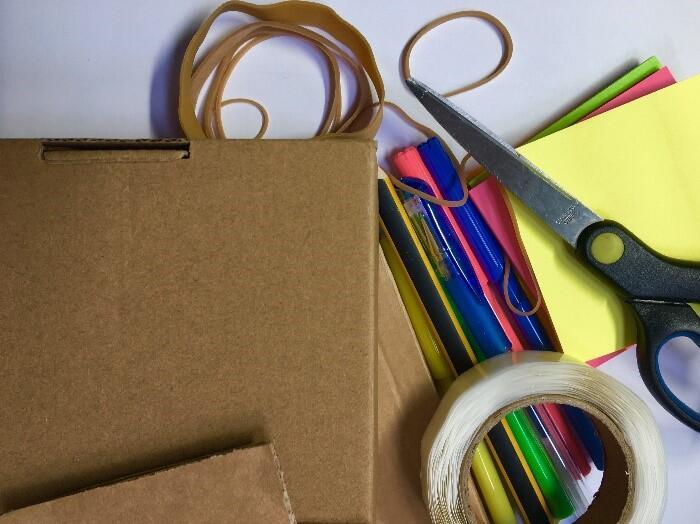
What you'll need
- 1 cardboard box
- Scissors
- Glue stick & double-sided tape
- Pencil
- Mix of felt-tips & colouring pens
- Post-it notes
- 2-3 rubber bands

Step 1
Cut out three cardboard squares from your box (you'll need the other side for the wall of your Museum later.
These three squares are going to make stamps so you can make the windows and decoration of your post-it Museum!
Draw shapes on your cardboard - a frame, an arch and a sill with lines to divide a window into 3 sections of windowpanes.
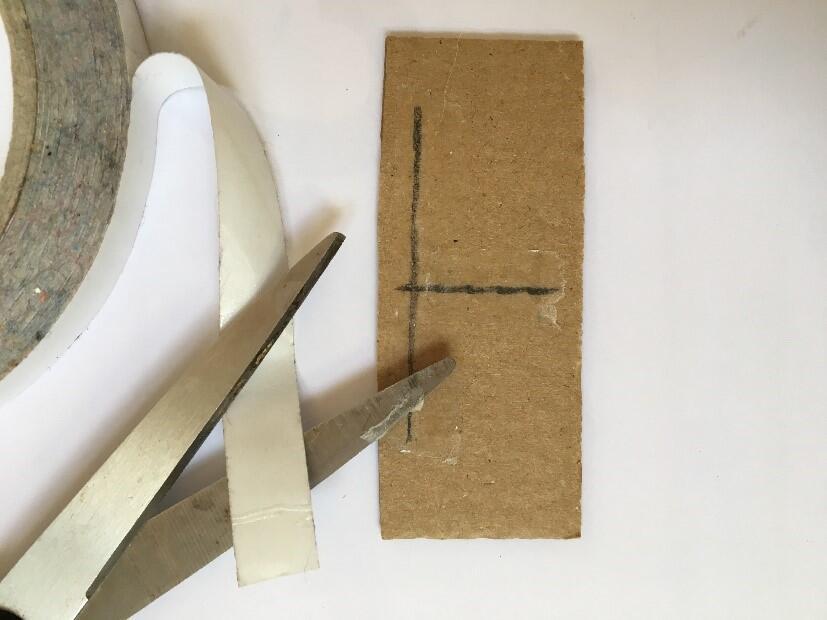
Step 2
Onto your three drawings of window parts, cut some double-sided tape and put it onto the drawing. Peel off the sticky back!

Step 3
Cut the elastic bands.

Step 4
Stick the cut rubber bands onto the double-sided tape, following your drawing of the window parts.

Step 5
Use some waterbased felt-tips or brush pens to draw colour onto the rubber lines. If you have stamp pads you can use those too.
The rubber lines should be wet with ink - but don't worry, it's all part of the plan!
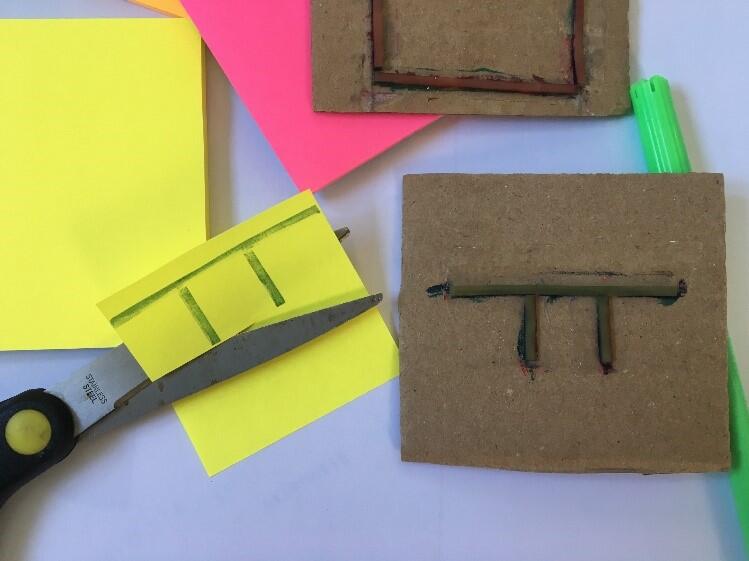
Step 6
After you've coloured the rubber window, now you can flip it and stamp onto a post-it note - printing the colour onto the post-it.
Now cut out the stamped window parts.
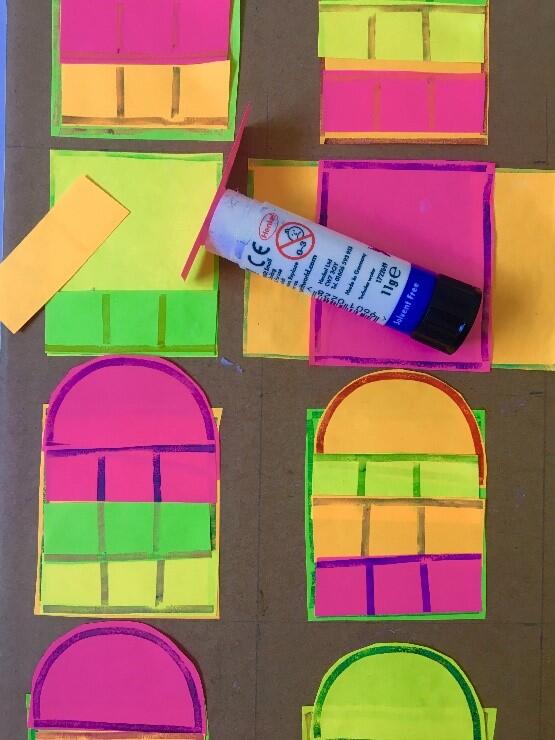
Step 7
Use glue or tape to stick down your stamped post it notes onto a big piece of cardboard, to make the windows of your post-it Museum!
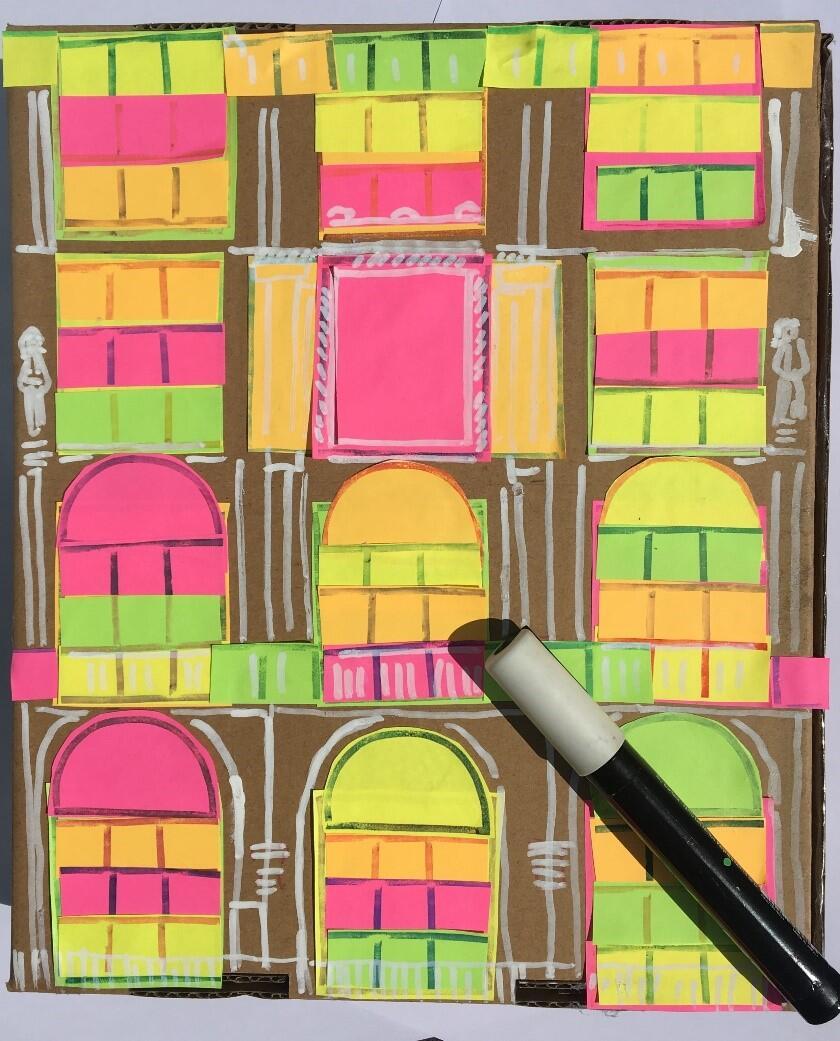
Step 8
Use your favourite felt-tips and pens to draw onto the boxes any features & details you like! Sir John Soane was a big fan of ornament and decoration, so go crazy!
Finished! Back to top
Now sit back and enjoy your new post-it note home inspired by Sir John Soane's Museum! Email your creations to education@soane.org.uk and we'll post our favourites on Twitter!
Private Tours Back to top
Book a private tour – before we open, during the day, or in the evening after we’ve closed to the public. To find out more contact events@soane.org.uk or on 020 7440 4264.
Explore Soane Back to top
Fly through a digital scan of Sir John Soane's Museum on our digital online tour, Explore Soane. Two of the Museum's most famous spaces are currently available to interact with: the Model Room in the Private Apartments, and the Sepulchral Chamber, home of the 3,000-year-old Sarcophagus of Seti I.
Watch our Opening up the Soane series Back to top
The three-part series, Opening up the Soane, is airing on London Live during lockdown, and you can view the episodes the day after air on our website.
The story of the restoration of Sir John Soane's Museum in Lincoln's Inn Fields. Filmed over a period of 6 years, it traces the research, the discoveries and the skills that made transforming this magical place possible.
You can watch the series live on London Live, Freeview 8 | Sky 117 | Virgin 159 | YouView 8, or watch online using the link below.
Read our blog Back to top
During the lockdown, we're sharing stories, objects, step-by-steps, audio and book excerpts on our blog. You can also browse through our blog's archives for posts about the collections and conservation of the Museum.
Non-Profit Group Visits Back to top
We currently can’t facilitate group visits, please visit our Timed Tickets page for individual bookings.
Follow us on Social Media Back to top
Our social media accounts are as active as always. You can view and engage with on our profiles on Twitter, Facebook and Instagram as we share objects and stories from the Soane, and post important updates and news from the Museum.
Browse the Collections Back to top
Our Collections database offers entries on Soane's vast collections of art, antiquities, books, drawings and furniture. You can discover a selection of highlights from the collection, browse the collections by category or search the collections for a specific item.

